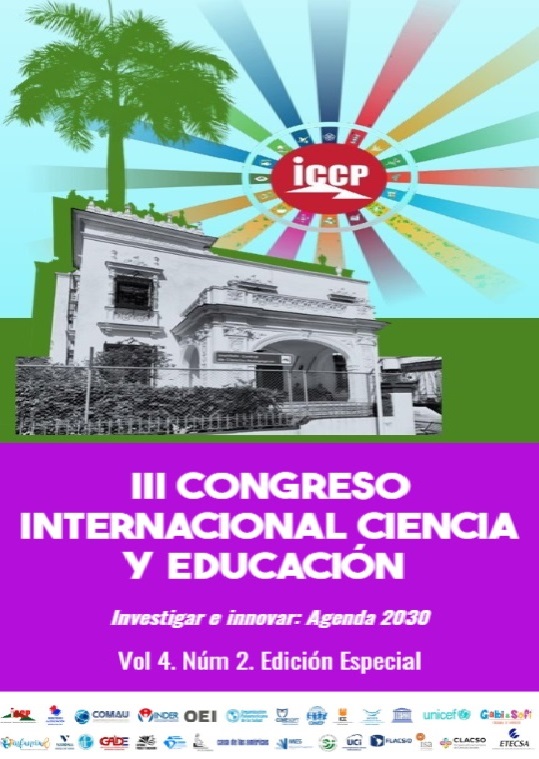Análisis bibliométrico del uso constante de la tecnología y su incidencia en el rendimiento escolar en niños y jóvenes
Resumen
Este artículo de revisión tiene como objetivo sintetizar la evidencia científica actual sobre la relación entre el uso constante de la tecnología y el desempeño escolar en población infantil y juvenil. Se realizó una búsqueda exhaustiva en bases de datos académicas para identificar estudios relevantes publicados en los últimos 10 años. Se incluyeron artículos originales que examinaron la asociación entre el uso de dispositivos tecnológicos y el rendimiento académico en niños y adolescentes. Los estudios revisados indican que el uso excesivo y prolongado de tecnología, especialmente antes de dormir, se asocia con una disminución del rendimiento académico. Esto se debe a factores como la reducción del sueño, la distracción, la disminución de la motivación y la interferencia con las actividades de estudio. Sin embargo, el uso moderado y con fines educativos puede tener efectos positivos en el aprendizaje. Los hallazgos sugieren que es importante establecer pautas y límites en el uso de tecnología por parte de los niños y jóvenes para promover un equilibrio saludable que no afecte negativamente su desempeño escolar. Se necesitan más investigaciones longitudinales para comprender mejor esta relación y desarrollar estrategias efectivas de intervención.
Descargas
Citas
Ak, Sh., Valvez, M., Lin, H. J., Coronado, N., VJT, C. R., GQR, G., ... & Ellahan, S. (2008). Addiction to the internet and online gaming. Pediatrics, 121(5).
Amorós, M. V., & Martínez, S. G. (2008). Habilidades informacionales y calificaciones académicas en las distintas áreas de conocimiento en una universidad española. Anuario ThinkEPI, 231-239.
Aria, M., & Cuccurullo, C. (2017). bibliometrix: An R-tool for comprehensive science mapping analysis. Journal of Informetrics, 11(4), 959-975.
Artunduanga, M., (2008). Variables que influyen en el rendimiento académico en la universidad. Departamento MIDE (Métodos de Investigación y Diagnóstico en Educación), 1-17. http://www.ori.soa.efn.uncor.edu/wp-content/uploads/2011/05/Rendimiento-Académico-Universitario.pdf.
Baker, J. R., & Moore, S. M. (2008). Distress and coping in dementia caregiving: the predictive value of adult attachment. Aging & mental health, 12(5), 584-594.
Bane, M. C. (2010). Cyber bullying and the perverse mean girl. Behavioral Sciences & the Law, 28(5), 695-710.
Baume-Psyx, E. (2008). Techno-Watching: Uncovering How the Internet Supports the Academic Activities of Swedish High School Pupils. Lund Institute of Technology.
Borja, R., & Gutiérrez, M. (2010). Tesis doctoral. Del autor.
Bostick, J., & Rains, S. A. (2015). A nail in the coffin or a wedge? exploring the effects of facilitation. Communication Research, 1-22.
Burch, S. (2005). Sociedad de la información/Sociedad del conocimiento. Palabras en juego, 45(5). chrome-extension://efaidnbmnnnibpcajpcglclefindmkaj/https://radioslibres.net/wp-content/uploads/media/uploads/analfatecnicos/76.SociedadDeLaInformacionYConocimiento-SallyBurch.pdf
Burgoon, J. K., Guerrero, L. F., & Floyd, K. (2012). Nonverbal Communication. New York: Routledge.
Castro Maldonado, J. J., Gómez Macho, L. K., & Camargo Casallas, E. (2023). La investigación aplicada y el desarrollo experimental en el fortalecimiento de las competencias de la sociedad del siglo XXI. Tecnura, 27(75), 140-174. https://doi.org/10.14483/22487638.19171
Chrisler, M. C., Rinehart, J. K., Clark, M. A., & Coulter, A. J. (2003). The media and body image: If looks could kill. Journal of Social and Clinical Psychology, 22(1), 71-93.
Franky, A.P., Chiappe, A. (2018). ICT and home-educating families: A qualitative multiple case study. Ensaio, 26(101), pp. 1324–1346
McDaniel, B. T. (2015). It's Not You, It's Me: The Dynamics of Emotional Distancing and Close Relationship Distress. (Doctor of Philosophy, The Ohio State University).
Mendoza, S. (2014). Personalidad opuesta al bullying. Un análisis empírico desde la psicología inversa. Tesis doctoral. Tarragona: Universitat Rovira i Virgili.
Moreno, M. (2017). Nuevas adicciones y problemas de conducta en niños y adolescentes a través de los contenidos y servicios de los dispositivos móviles. Anuario Jurídico y Económico Escurialense.
Moreno, R., Briner, L. R., & Smallwood, R. A. (2017). Investigation of Behavioral Mimicry by Media Characters in Emotional. Journal of Media Psychology, 1-11.
Sanabria- Navarro, J.R., Silveira Pérez, Y., Pérez Bravo, D.D., Cortina, M. (2023). Incidencias de la inteligencia artificial en la educación contemporánea . Comunicar, 31(77). 10.58262/. https://doi.org/10.58262/
Torres, R. (2005). Sociedad de la información. Sociedad del conocimiento, 1-9.
Derechos de autor 2024 Orfa Eteli Erazo Díaz,Elizabeth Del Rocío Proaño Cañizares,Ana Patricia Bustillos Ronquillo ,Rita Elizabeth Barriga Enríquez,Erika Nirman Barriga Enríquez

Esta obra está bajo licencia internacional Creative Commons Reconocimiento-NoComercial-SinObrasDerivadas 4.0.





 GADE: Revista Científica, eISSN: 2745-2891, Tel: (+57) 3143134045, E-mail: gaderevistacientifica@gmail.com
GADE: Revista Científica, eISSN: 2745-2891, Tel: (+57) 3143134045, E-mail: gaderevistacientifica@gmail.com
